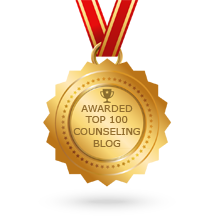Combating Mask Anxiety
/Going into the year 2020, no one could have imagined that the newest fashion trend would be a face mask. However, they have officially become a part of our everyday lives and will continue to play a role in our lives for the foreseeable future. Adjusting to wearing a mask every day has brought great anxiety to many, especially those who have a history of anxiety disorders, panic disorders, or claustrophobia.
A recent NPR article discussed how N95 respirators could block up to 95% of airborne particles, surgical masks block up to 75% of airborne particles, and cloth masks can block up to up to 50% of airborne particles. However, this blocking of airborne particles should not be confused with blocking our air supply. According to Dr. Christopher Ewing, wearing a standard face mask does not lower a person’s oxygen level; however, it may alter our breathing patterns as we are attempting to compensate for the discomfort that we feel. Further, our breathing patters may be altered as we are trying to prevent things such as fogging up our glasses. With such worry and uneasiness with these changes, we must understand and employ coping mechanisms to combat anxiety related to wearing a mask.
First, we must explore different types of masks to determine which is most comfortable for us to wear. We can explore this by wearing the masks around our house for a short period, allowing us to become used to the feeling of wearing a mask. Wearing the mask around our house for a short period of time is also useful as it allows us to expose ourselves to the item that provokes our anxiety. Still, we are able to maintain safety as we will not be exposed to anyone if we must take off the mask because the anxiety becomes too overwhelming.
Second, we must challenge our anxious thoughts about our masks. During this unsettling time, one thing we do have control over is if we wear our masks. Wearing masks allows us to take control of our health and the health of those we are in contact with. We must remind ourselves that wearing face masks is a preventive health measure that keeps us safe and does not pose any adverse health outcomes.
Lastly, we must focus on our breathing. To avoid shallow breathing that may occur when we are trying to make ourselves more comfortable, we should concentrate on diaphragmatic breathing, also known as belly breathing. This technique is often taught during yoga and meditation practices and means that we can feel our belly rise and fall with our breath, rather than feeling our chest rise and fall with each breath. Diaphragmatic breathing has excellent benefits, including lowering our heart rate, blood pressure, and helping us relax and lower the effects that cortisol may be having on our body when we active our fight or flight system. Last but not least, please be sure to reach out to a mental health professional if you are facing anxiety that becomes overwhelming or unbearable. Therapists at Life Balance Counseling are currently offering telehealth sessions, phone sessions, and in-person sessions with extra precautions.
By: Mary Collins, LPC, CADC







